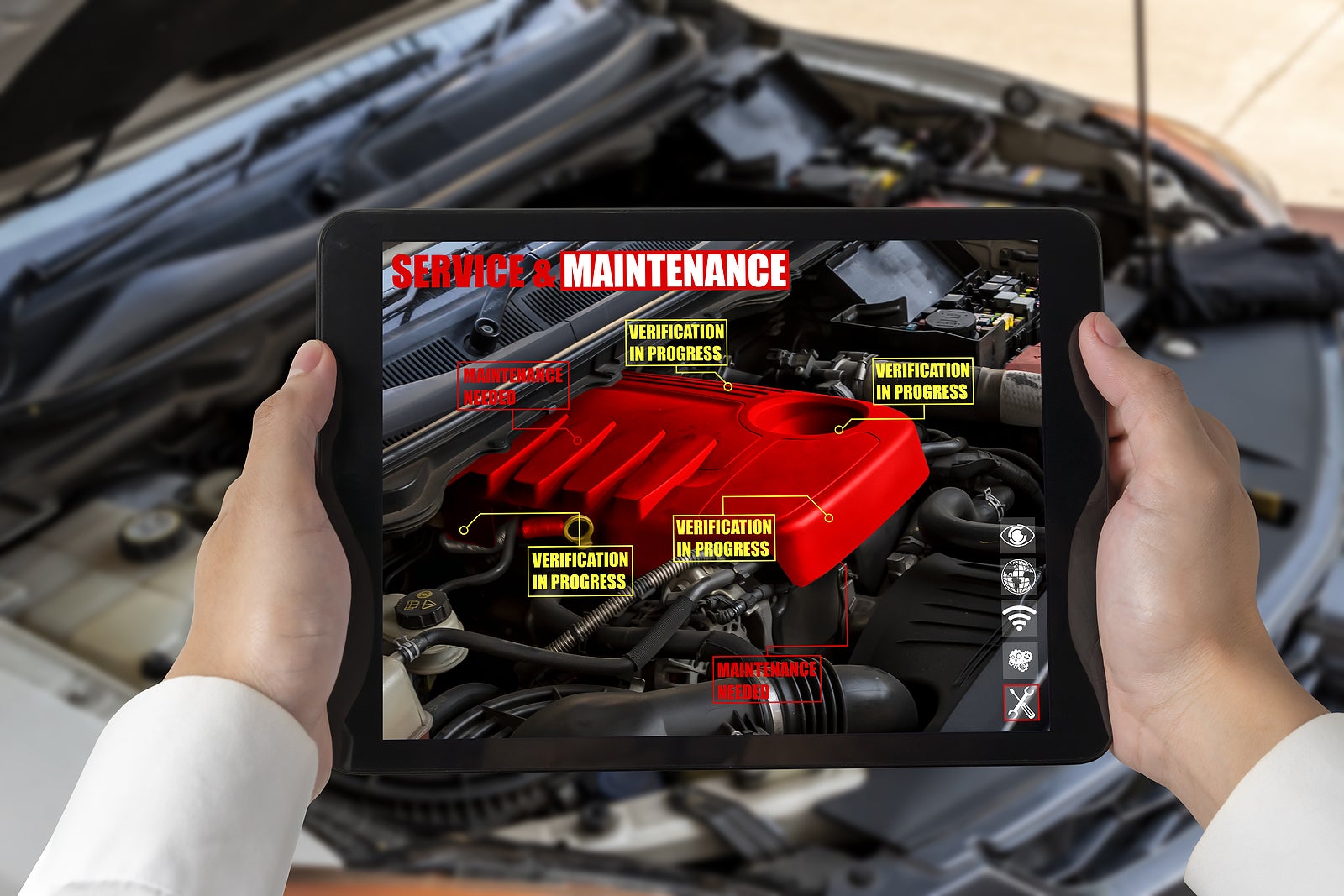
Exploring revolutionary AR in automotive industry: This feature takes a closer look at how augmented reality (AR) is reshaping the modern automotive industry through practical application.
Augmented reality, including AR in the automotive industry, has more practical applications than its sister technology, virtual reality, because of the way it’s presented. AR involves taking digital content or information and layering it over the real world.
AR can be used to project a sample of a couch in your living room to see what it looks like before you buy, or to display vehicle speed on the windshield to keep your eyes on the road. Of course, there are many more uses, as well.
Compared to virtual reality, you don’t need to wear an all-encompassing headset to leverage AR. Devices like Google Glass are perfect for commercial settings. But for other applications, a small projector will do.
Because of its practicality, the technology is sweeping into many industries. However, one place it’s having the biggest impact is the automotive sector.
Here’s how the adoption of AR in the automotive industry is changing the field.
1. The Modern Vehicle
AR is changing how consumers experience driving. Using the technology, manufacturers can create a virtual heads-up display (HUD) that shows pertinent information in front of the driver, like speed, distance traveled, fuel, and more. Drivers don’t need to take their eyes off the road to look at a conventional dash display because it’s all in their line of sight.
AR can also be used to convert driver gestures and behaviors into simple controls. Want to change the music track? Wave your hand. Want to answer a call? Nod your head.
There are other safety applications, too. GPS directions can be presented on the dash or windshield, along with notifications — like a real-time braking meter. Distance readings, like the space between a vehicle and the one in front of it, can help drivers pinpoint the best time to slow down or stop. A company called WayRay already has this technology in play.
2. New Buyer Experiences
The traditional method for purchasing a vehicle is to visit a car lot, peruse the vehicles, go for a test drive, and move forward with a loan. But all of that can take quite a bit of time, meaning buyers spend several hours, if not most of the day, at a car dealership.
Companies like Carvana have tipped this practice on its head by allowing you to buy and sell cars online. AR will take things a step further. Imagine overlaying a car you’re planning to purchase in your driveway to see what it looks like. Or maybe climbing inside and taking a look at the cabin without actually being near the vehicle.
The virtual car can be projected onto the real world, and customers can change parameters in real-time, like color, size, make, and more. You can even take a virtual test drive using an enhanced computer vision platform.
3. Revolutionary Vehicle Design
By relaying virtual content on a backdrop of the real world, developers and designers can more accurately shape their visions. In other words, AR can be used during the design phase to come up with more compelling and realistic vehicle concepts.
At each stage of the design process, they can project a representation of their in-progress concepts to see the exterior, interior designs, and more. They can also manipulate the digital images by zooming in, moving, or altering them. This is critical for creating attractive designs because even when something looks good to the naked eye, it doesn’t always translate to quality products.
While there are no guarantees, the technology means we may see vehicle manufacturers and designers take more risks. Because they can visualize unique concepts in a real way, there’s a lot more room to experiment and branch out.
4. New Autonomy Applications
Self-driving vehicles are the future. We still have a long way to go before they’re the dominant road vehicles, but we’re inching closer. Driverless vehicles are powered by AI algorithms and machine learning platforms, which help monitor sensor data and make quick decisions to control the car.
AR can enhance this ecosystem by relaying important information to drivers and passengers. It can also keep them alert in the event of an emergency. The technology can take all of that data and present it in a way that’s useful to drivers. Small vehicle in a blind spot? You and your AI controller can see it. Potential road hazard coming up? The right warnings can be issued.
Driverless controllers can use the technology to visualize events, predicting the right decision at any moment. Consider a predictive modeling system that knows all the potential outcomes of a driving aberration, such as a last-second lane swerve.
5. In-Vehicle Entertainment
Imagine turning the back of your car seats into a movie screen during a road trip or projecting AR-based games onto the windows and inside the cabin.
Thanks to driverless vehicles reducing the danger of distractions, this technology can be used to entertain children and passengers and help make dreary car trips more exciting.
Adults could also use the technology to entertain themselves. One could browse social media using AR projections, read news stories, watch videos, and more.
Adopting AR in the Automotive Industry
AR will revolutionize what it means to be a driver and a passenger. It’s also disrupting in-vehicle entertainment and reshaping the way manufacturers approach design.
It’s all promising, but we’re merely scratching the surface. The automotive industry is evolving and will continue to, thanks to this technology and many others.
1788 Views












